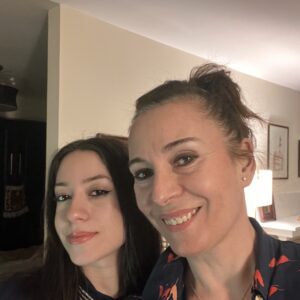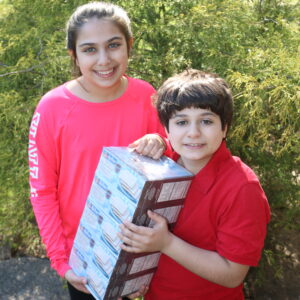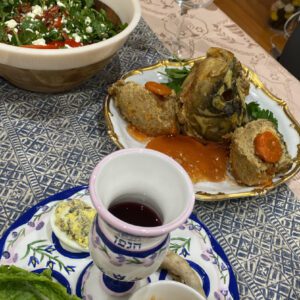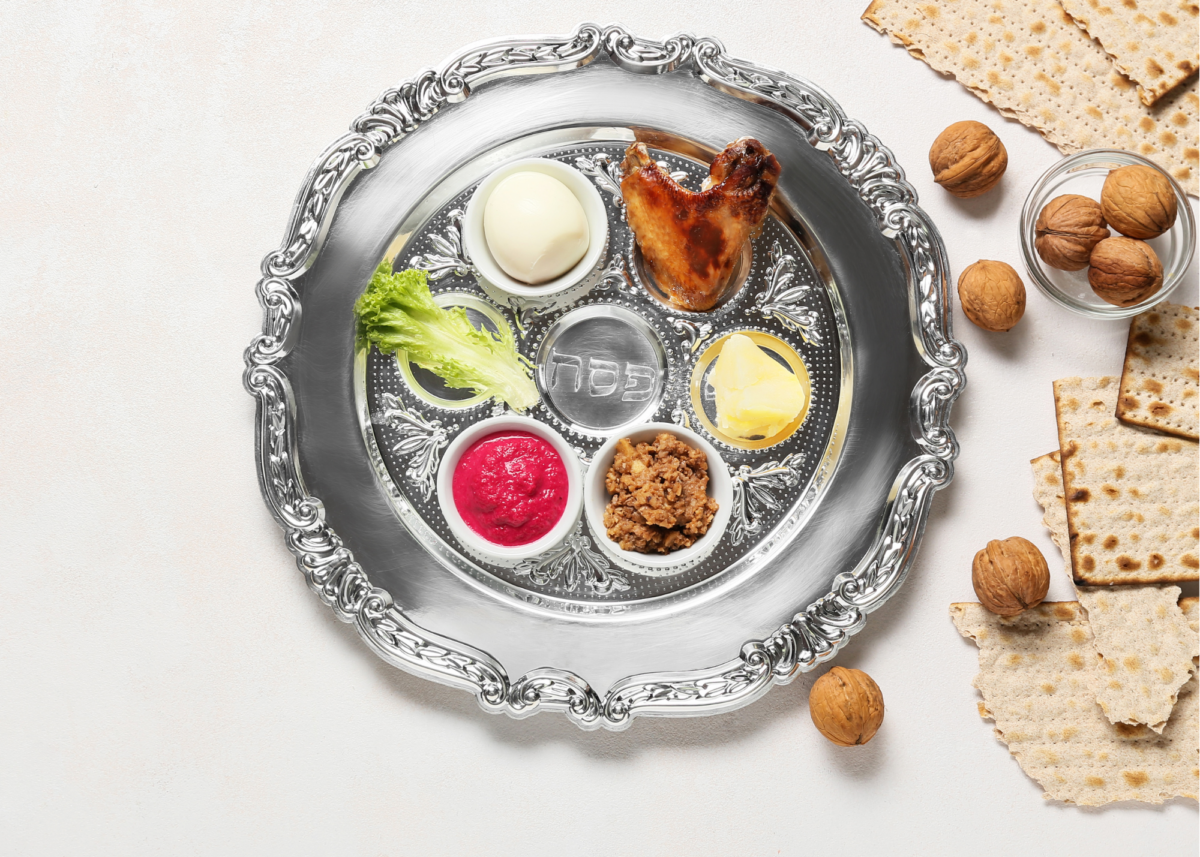In 1917, seven brave Jewish women created a new place for belonging. We all know their resilience and focus on heritage provided the framework for the sisterhood Sigma Delta Tau enjoys today.
Our Founders’ Jewish heritage is shared by many modern day sisters and remains an important pillar of Sigma Delta Tau. It also serves as a reminder of the Founders’ original intent to honor diversity. Celebrating and educating each other is an incredible benefit of sorority, one our members embrace through sharing personal experiences. This story about Passover is one of an ongoing series to educate members about culturally relevant moments in sisters’ lives.
The Passover holiday began on Saturday, April 12, 2025 and ends after sundown on Saturday, April 20, 2025. Passover is celebrated with a special meal, called the Seder, which centers around the retelling of the Jewish people’s liberation from slavery in Egypt. A book called the Haggadah contains the ritual, prayers, songs, and stories to guide the Seder. Foods and cups of wine symbolize different components of the story of the Exodus, including a retelling of the ten plagues that befell Egypt to convince the Pharaoh to release the Israelites. For the members who observe, the traditions are both special and delicious.

Sister Henriette Feldman (Delta Mu–Manhattan) described Passover as, “A heartfelt connection to my roots, my people, and the resilience of Jewish history. As a Jewish woman, celebrating Passover is a proud expression of identity, culture, and love. I reflect on where I come from, and invite others to share in that journey.”
She eagerly offered context to educate others about Passover. “[It’s] a celebration of Jewish endurance and togetherness. We don’t just remember our history; we actively engage with it,” she said. “It’s a night filled with symbolic foods, readings, singing, and of course, incredible meals. But above all, it’s a time to feel proud of who we are and express love for one another.”
Henriette’s Seder often includes immediate family, but they love to invite others to the table for their first Seder experience. “Sharing something sacred with people from outside the tradition is one of the most beautiful parts of the celebration,” she said. “ Seeing their curiosity and joy makes it even more special.”
Henriette’s celebration centers around the Passover Seder rituals with whomever joins her at the table. She explained the round Seder plate, a common symbol of Passover. “You might see a special round plate at the table,” she said. “Each item on it has symbolic meaning: bitter herbs for the suffering of slavery, a roasted bone for the Passover sacrifice, charoset (a sweet mixture of apple, honey and nuts) to represent the mortar used by enslaved Israelites, and more.” She said each food tells a piece of the Passo
ver story, and some families use costumes or props to make the telling of the ten plagues engaging.

Mollie Good (Delta Nu–Stevens) enjoys making the telling fun. “As we all squeeze around the table, we go through the Haggadah, which explains the story of Passover, “ she said. “In recent years, my mom and I have assigned candies to the plagues to make them fun, such as red jello for blood or hot tamales for boils. I always look forward to that portion of the Seder!”
Mollie’s family hosts two Seders with family and friends included. “My mom spends all week preparing by cooking delicious food for everyone to enjoy,” Mollie said. She said her favorite part about celebrating Passover is the togetherness, especially with loved ones she doesn’t see often.
Henriette loves the togetherness of the Seder too. “The ritual reminds us of the hardships endured by Jewish people throughout history, and how even in suffering, we remained united and strong,” she said. “That legacy lives on in each of us today, and Passover is how I choose to honor it.”
Sister Alina Ongeyberg (Delta Theta–Pace) also appreciates the traditions of the ritual. “There’s something really special about reconnecting over food, shared rituals, and stories that have been told for generations,” she said. “Passover commemorates the Exodus from Egypt and the journey from slavery to freedom. At its core, it’s a celebration of resilience, remembrance, and hope.”

Like Mollie, Alina’s mom prepares a memorable meal. “[She] makes an incredible matzah babka, which she recently taught me how to make. She also makes enough gefilte fish to feed a whole village,” Alina said. “Passing that down is such a meaningful way to keep our traditions alive.”
Mollie offered an explanation for the use of matzah during the Passover Seder. “There’s always a ton of food, but you cannot eat leavened bread because as the Jews were leaving Egypt, the only thing that they had was matzah.”
Henriette’s family has fun with the matzah. “There’s something so magical about starting the Seder with matzah topped in different ways, like sweet, savory, and spicy,” she said. “My Ukrainian roots come through in our appetizers, inspired by Russian-Ukrainian cuisine, and they set the mood. Food carries memory, and in those small plates, I taste generations of resilience and creativity.”
For all three contributing sisters, the celebration of Passover is a powerful connection to heritage and family.
“What makes Passover so beautiful is its power to gather people across generations, faiths, and backgrounds to reflect, celebrate, and break bread together,” Henriette said. “It reminds us that through love, memory, and tradition, we remain connected to something much bigger than ourselves. And that’s worth celebrating.”
‘When it comes to wishing someone a Happy Passover, the best approach is from the heart. Whether it’s with a warm hug, a thoughtful call, or simply showing up for someone with love and openness, it’s all about connection. You can say “Chag Sameach!” (Happy Holiday) or “Happy Passover!”, but honestly, the sentiment matters more than the words.’

